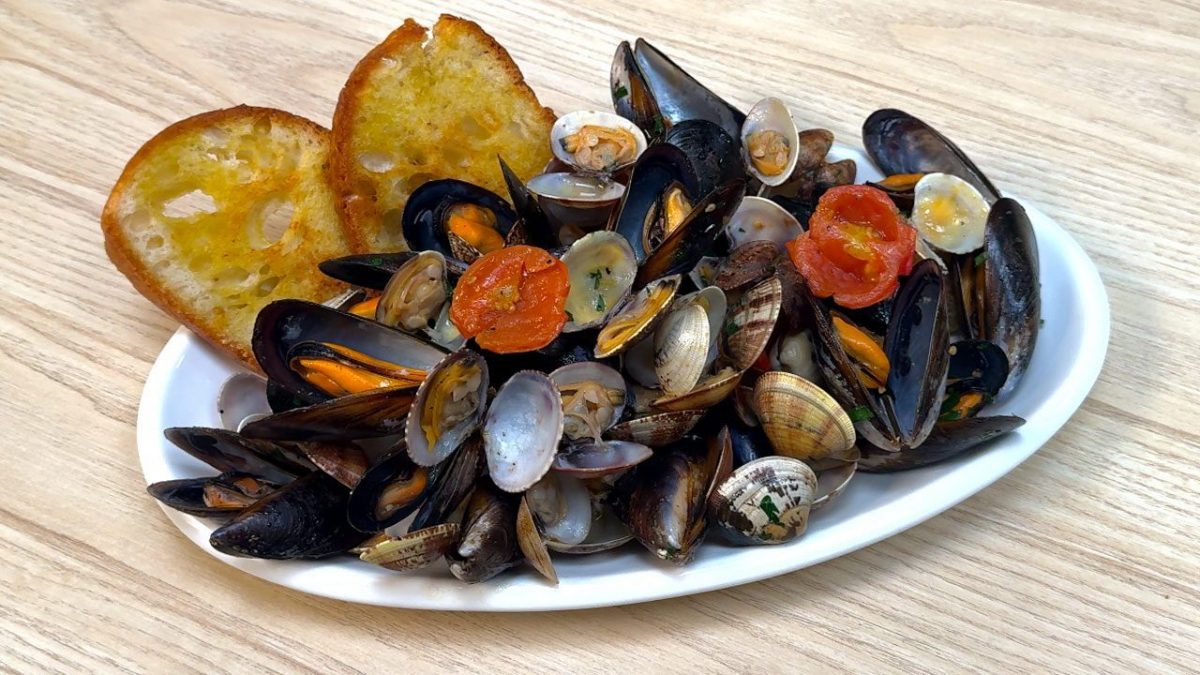
Mussels and Clams Sauté is a quick and easy seafood appetizer, perfect to bring to the table for a seafood lunch or dinner with guests. The term sauté comes from French and refers to this particular cooking method in which the molluscs are sautéed in a pan over high heat: a technique in which little seasoning is also used, therefore considered light and healthy.
We'll be showing you here how to prepare it at home with a few simple ingredients. To do it perfectly, you just need to open the mussels and clams on a high flame without adding fat and then let them flavour in a non-stick pan with the filtered cooking liquid, a soffritto of garlic and oil and the cherry tomatoes cut in half. Sprinkle all this with a sprig of chopped parsley and then accompany it with slices of freshly toasted homemade bread: for a dish that is easy to mop up, excellent to offer also as a tasty and quick side dish.
What is a Mussels and Clams Sauté?
Mussels and clams sauté, known in Italian as sauté di cozze e vongole, is a cherished seafood dish with deep roots in Italy’s coastal culinary traditions. Especially popular in southern regions like Campania and Puglia, this dish embodies the simplicity and freshness of Mediterranean cooking. Traditionally, it features mussels and clams cooked quickly in olive oil, garlic, parsley, and a splash of white wine or tomato—ingredients that enhance the natural brininess of the shellfish. Its origins can be traced to fishing communities who prepared it with the day’s catch, often served with crusty bread to soak up the flavorful broth.
As Italian immigrants began arriving in the United States in large numbers in the late 19th and early 20th centuries, they brought their rich food heritage with them. Coastal cities like New York, Boston, and San Francisco became hubs for Italian-American cuisine. Mussels and clams, already abundant along U.S. coasts, were natural substitutions for more expensive seafood, and traditional dishes like sauté di cozze e vongole adapted quickly. Italian-American cooks preserved the essence of the original recipe while incorporating local ingredients. Today, it’s a beloved appetizer or main dish in Italian restaurants across the U.S., especially in regions with strong Italian heritage.
Pro Tips for The Best Mussels and Clams Sauté
- Always use fresh, live mussels and clams. Discard any with broken shells or those that don’t close when tapped.
- Scrub mussels under cold water and remove beards. Soak clams in salted water for 30 minutes to expel sand, then rinse well.
- A large, shallow pan allows even cooking and helps steam the shellfish properly. Cook in batches if necessary to ensure the shellfish open evenly.
- Use low to medium heat to avoid burning the garlic, which can make the dish bitter. Once you add the shellfish, cover the pan to steam them quickly and evenly.
- Serve hot with toasted bread to soak up the broth. Timing is key for both flavor and texture.
What is The Golden Rule When Cooking Mussels or Clams?
The golden rule when cooking mussels and clams is to cook them just until their shells open, then remove them from heat immediately. Overcooking makes them tough and rubbery. Always discard any that don’t open during cooking, as this indicates they weren’t alive and safe to eat. This simple rule ensures tender, flavorful shellfish every time.
How Long Should I Sauté Mussels and Clams For?
Mussels and clams should be sautéed for about 5 to 7 minutes over medium-high heat, just until their shells open. Stir occasionally and keep the pan covered to help them steam evenly. Once the majority have opened, remove from heat immediately to avoid overcooking. Discard any that remain closed.
Should I Soak Mussels and Clams Before Cooking?
Yes, it's important to soak clams in cold, salted water for about 20–30 minutes before cooking to help them purge sand and grit. Mussels typically require less soaking but should still be rinsed thoroughly under cold water and scrubbed clean. Removing beards from mussels is also essential for cleanliness and better flavor.
Can I Add Anything Else to This Sauté?
If you like spicy flavors you can add a pinch of fresh chili pepper slices, you can use the preserved tomato sauce instead of the cherry tomatoes or, for a white variant, you can omit the latter and blend the mussels and clams with a glass of dry white wine.
What Can I Serve These With?
Sautéed mussels and clams pair wonderfully with crusty bread to soak up the savory broth, or over a bed of linguine or spaghetti for a heartier meal. They also complement light sides like grilled vegetables, lemony salads, or a chilled glass of white wine such as Vermentino or Sauvignon Blanc.
Can I Make This Sauté Ahead of Time?
Sautéed mussels and clams are best enjoyed fresh, as their texture and flavor diminish over time. While you can clean and prep the shellfish in advance, cooking should be done just before serving. Reheating can make them rubbery and the broth less aromatic.
Does It Freeze Well?
No, sautéed mussels and clams do not freeze well. Freezing alters their texture, making them rubbery and less pleasant to eat. The delicate broth can also separate or lose flavor upon thawing. It’s best to enjoy this dish fresh.
How to Store Any Leftovers
Store any leftover mussels and clams in an airtight container in the refrigerator for up to 1 day. Make sure to cool them quickly and keep them in their cooking broth to retain moisture. Reheat gently on the stove over low heat—just until warmed through—to avoid toughening the shellfish.
Ingredients
How to Make Mussels and Clams Sauté
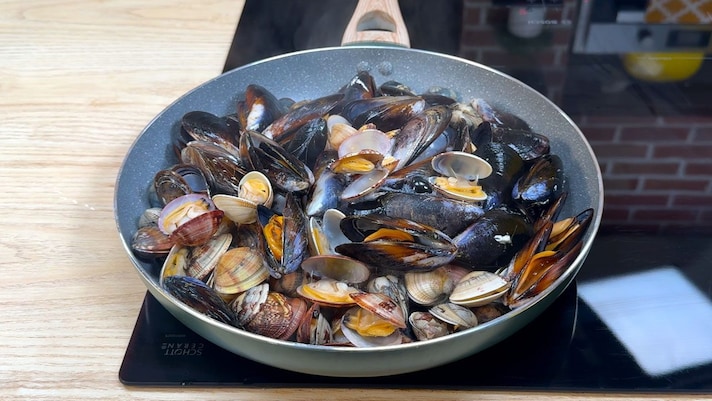
Collect the molluscs in a non-stick pan without adding fat, cover with a lid and leave them to open on a high flame.
Collect the molluscs in a non-stick pan without adding fat, cover with a lid and leave them to open on a high flame.
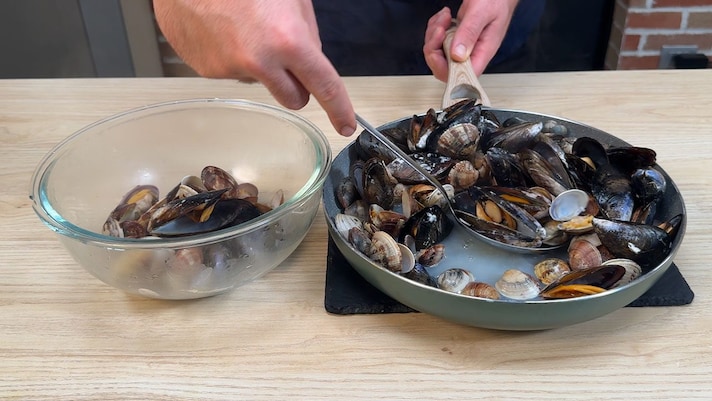
Then remove the mussels and clams and place them in a bowl and set aside.
Then remove the mussels and clams and place them in a bowl and set aside.
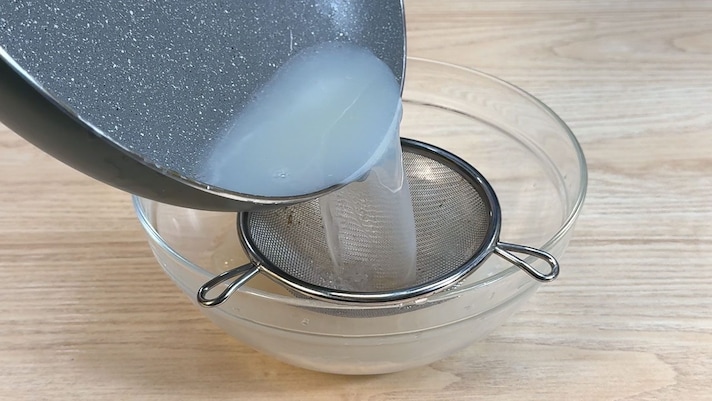
Filter the cooking liquid through a fine mesh strainer.
Filter the cooking liquid through a fine mesh strainer.
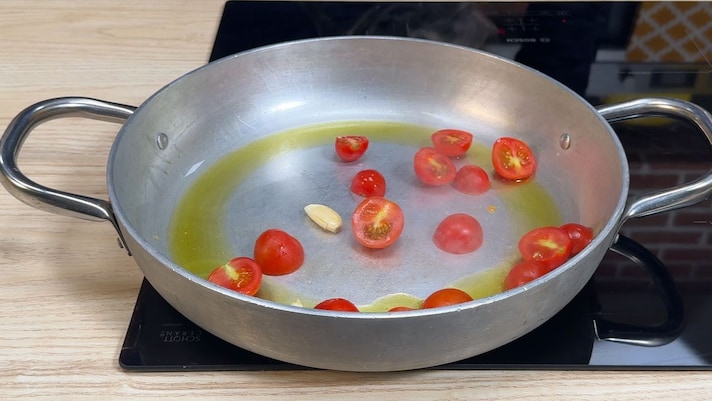
In a large pan, brown the garlic cloves with a generous drizzle of extra virgin olive oil, then add the halved cherry tomatoes to the soffritto and let them flavor for about 5 minutes.
In a large pan, brown the garlic cloves with a generous drizzle of extra virgin olive oil, then add the halved cherry tomatoes to the soffritto and let them flavor for about 5 minutes.
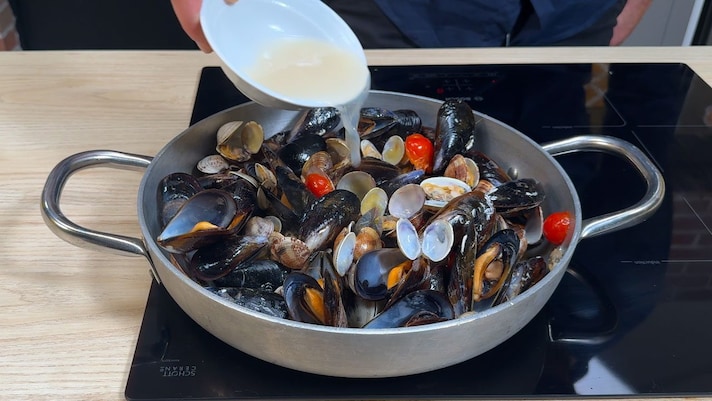
At this point, add the mussels and clams kept aside, pour in the filtered cooking liquid and let it all flavor for a couple of minutes; then remove from the heat and flavor with a tuft of chopped parsley and a sprinkling of freshly ground pepper.
At this point, add the mussels and clams kept aside, pour in the filtered cooking liquid and let it all flavor for a couple of minutes; then remove from the heat and flavor with a tuft of chopped parsley and a sprinkling of freshly ground pepper.
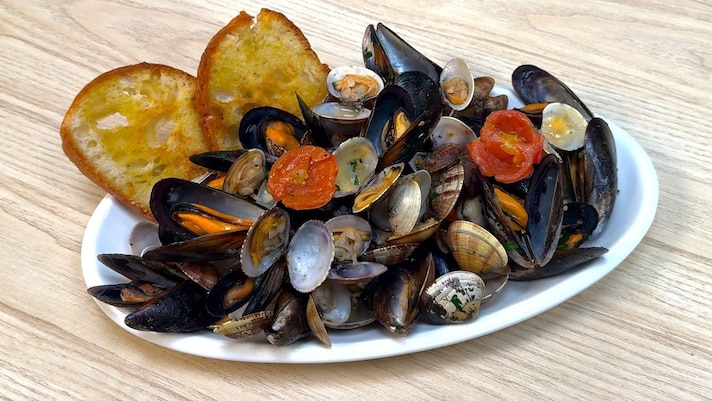
Arrange the sautéed mussels and clams on a serving plate and serve with slices of toasted homemade bread. Enjoy!
Arrange the sautéed mussels and clams on a serving plate and serve with slices of toasted homemade bread. Enjoy!
;Resize,width=767;)
